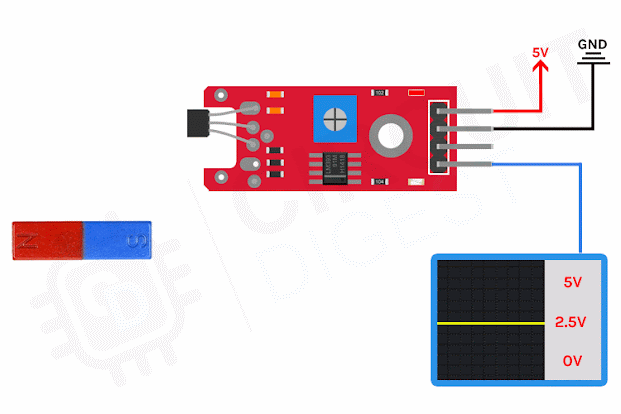How Does a Hall Effect Sensor Module Work?
Hall effect sensors work on the principle of the Hall effect. These sensors consist of a thin piece of rectangular p-type semiconductor material like Gallium Arsenide, Indium Arsenide, Silicon, etc. This p-type semiconductor material is called the Hall element. Continuous current allowed to flow through the Hall element. When the device is placed within a magnetic field, the magnetic flux lines exert a force on the semiconductor material which deflects the charge carriers, electrons, and holes, to either side of the semiconductor. This movement of charge carriers is a result of the magnetic force they experience passing through the semiconductor material.
As these electrons and holes move sidewards a potential difference is produced between the two sides of the semiconductor material by the build-up of these charge carriers. Then the movement of electrons through the semiconductor material is affected by the presence of an external magnetic field that is at right angles to it and this effect is greater in a flat rectangular shaped material. The effect of generating a measurable voltage by using a magnetic field is called the Hall Effect.
After understanding this, try to interface with Arduino

Comments
Post a Comment